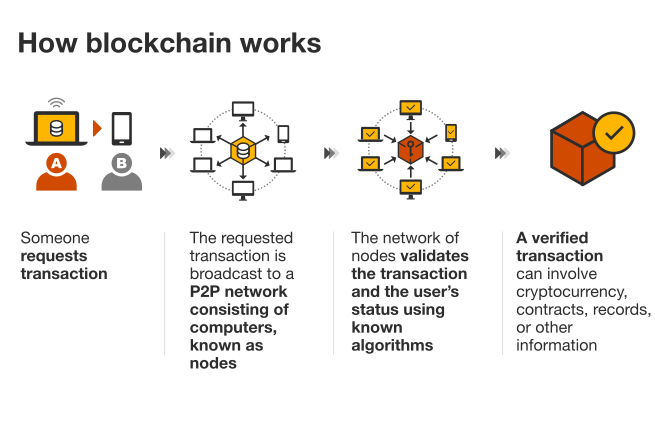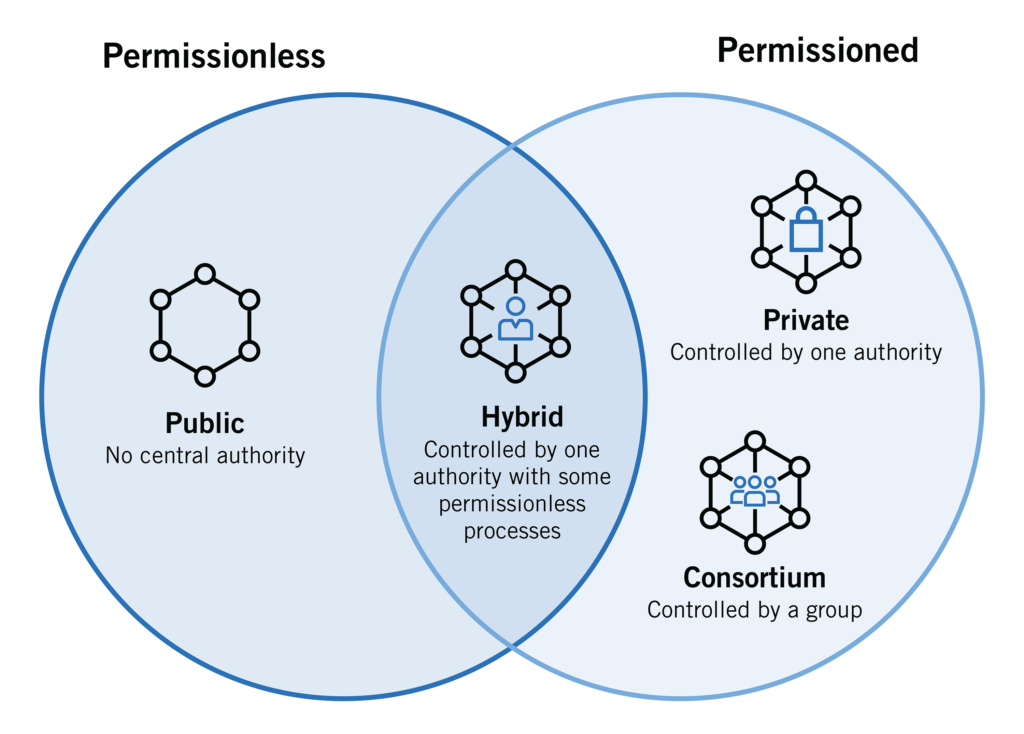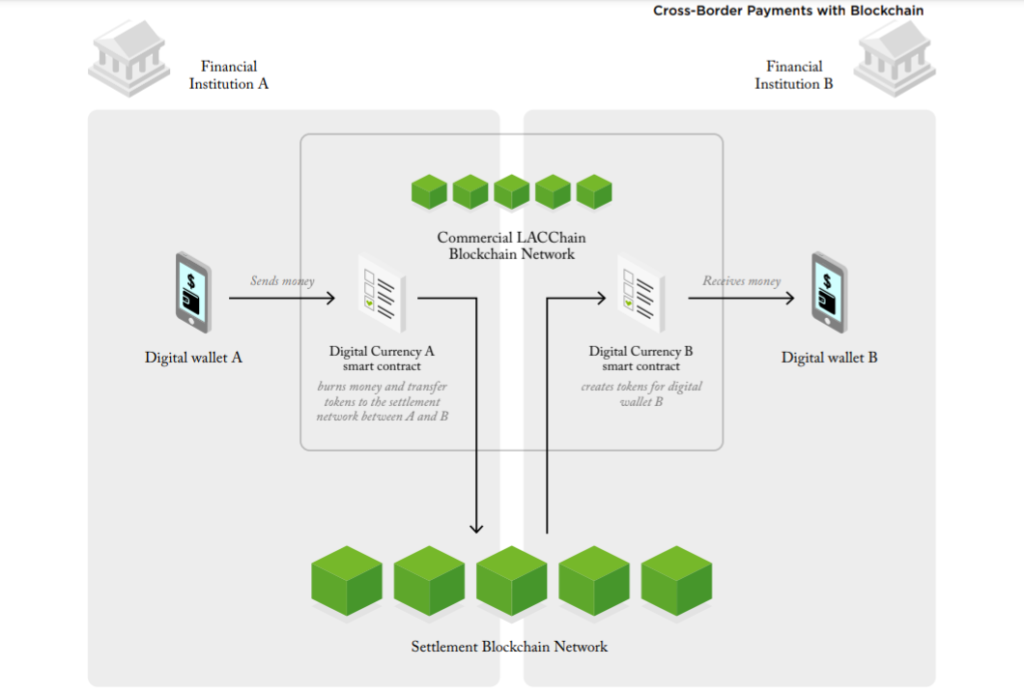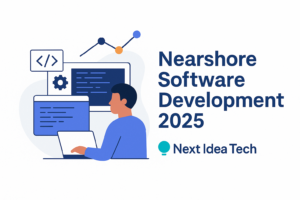
In an era defined by rapid technological advancement, Blockchain has emerged as one of the most transformative innovations of the 21st century. Originally conceived as the underlying technology for cryptocurrencies like Bitcoin, Blockchain has since evolved into a powerful tool with applications far beyond digital currencies. Today, industries ranging from finance and healthcare to supply chain management and real estate are leveraging Blockchain to drive efficiency, enhance transparency, and secure critical data.
Hire the best developers in Latin America. Get a free quote today!
Contact Us Today!For businesses, understanding and implementing Blockchain technology is no longer an abstract concept—it’s a strategic necessity. According to a report by Deloitte, 81% of executives believe Blockchain is broadly scalable and will achieve mainstream adoption. Yet, despite its potential, many organizations struggle to navigate the complexities of Blockchain implementation. The challenges are multifaceted: from selecting the right type of Blockchain to ensuring seamless integration with existing systems, the path to successful adoption requires careful planning and execution.
This article serves as a comprehensive guide to Blockchain implementation, designed to equip business leaders with the knowledge and tools needed to harness this groundbreaking technology. Whether you’re exploring Blockchain for the first time or seeking to refine your existing strategy, this guide will walk you through the key steps, practical use cases, and cost considerations involved in bringing Blockchain solutions to life.
What is a Blockchain?
At its core, Blockchain is a decentralized, distributed ledger technology (DLT) that enables the secure and transparent recording of transactions across a network of computers. Unlike traditional databases, which are typically controlled by a central authority, Blockchain operates on a peer-to-peer network where every participant (or “node”) has access to the same information. This decentralized structure eliminates the need for intermediaries, reduces the risk of fraud, and ensures data integrity.
How Blockchain Works

Blockchain derives its name from the way it stores data: in a series of “blocks” that are linked together in a chronological “chain.” Each block contains a list of transactions, a timestamp, and a cryptographic hash of the previous block. This hash acts as a unique digital fingerprint, ensuring that once a block is added to the chain, it cannot be altered without changing all subsequent blocks. This immutability is one of Blockchain’s most powerful features, making it virtually tamper-proof.

To add a new block to the chain, network participants must reach a consensus using mechanisms like Proof of Work (PoW) or Proof of Stake (PoS). These mechanisms ensure that all nodes agree on the validity of transactions, further enhancing the system’s security and reliability.
Key Features of Blockchain
- Decentralization: Unlike traditional systems that rely on a central authority, Blockchain distributes control across a network of nodes. This reduces single points of failure and enhances resilience.
- Transparency: All transactions on a Blockchain are visible to participants, fostering trust and accountability.
- Immutability: Once recorded, data cannot be altered or deleted, ensuring a permanent and auditable record.
- Security: Advanced cryptographic techniques protect data from unauthorized access and tampering.
- Efficiency: By eliminating intermediaries and automating processes through smart contracts, Blockchain can streamline operations and reduce costs.
Practical Blockchain Solutions for Various Business Use Cases
While Blockchain gained prominence as the technology behind Bitcoin, its applications have expanded far beyond cryptocurrencies. Today, Blockchain’s ability to automate processes through smart contracts—self-executing agreements with predefined rules—opens up new possibilities for efficiency and innovation across all industry verticals. For instance:
1. Financial Services
In Finance, Blockchain is enabling faster and more secure cross-border payments by eliminating intermediaries, reducing transaction times from days to seconds, and lowering costs. Its decentralized nature ensures secure, transparent, and tamper-proof transactions, while smart contracts automate processes, enhancing efficiency and trust in global financial systems.
Real-World Example: Ripple’s (XRP) Blockchain-based payment network enables real-time cross-border transactions for financial institutions, significantly reducing costs and processing times.
2. Supply Chain Management
In Supply Chain Management, Blockchain technology can provide end-to-end visibility and traceability by recording every transaction and movement of goods on an immutable ledger. This ensures transparency, reduces fraud, and enhances accountability, enabling businesses to track products from origin to destination, optimize processes, and build trust with consumers and partners.
Real-World Example: Walmart uses the IBM Food Trust Blockchain to track the journey of food products from farm to store. This has reduced the time it takes to trace the origin of contaminated food from days to seconds, enhancing food safety.
3. Healthcare
In Healthcare, Blockchain has been used to secure, tamper-proof sharing of patient data among providers by creating a decentralized, encrypted ledger. This enhances data privacy, reduces administrative burdens, and improves interoperability, enabling seamless and accurate access to medical records while maintaining compliance with regulations like HIPAA
Real-World Example: MedRec developed by MIT uses Blockchain to create a decentralized medical record system, giving patients control over their data while allowing authorized providers to access it.
4. Real Estate
In Real Estate, Blockchain simplifies property transactions by digitizing and automating processes through smart contracts and decentralized ledgers. It provides a secure, immutable record of ownership, ensuring that property histories are accurate and easily verifiable.
Real-World Example: Propy uses Blockchain and AI to facilitate international real estate transactions, enabling buyers and sellers to complete deals entirely online with secure, tamper-proof records.
In the next section, we’ll explore the different types of Blockchains and how to choose the right one for your business needs.
The 4 Main Types of Blockchains

Blockchain technology is not a one-size-fits-all solution. Depending on the specific needs and goals of your organization, you may choose from different types of Blockchains, each with its own unique characteristics, advantages, and limitations. Understanding these variations is crucial for selecting the right Blockchain framework for your business.
1. Public Blockchains
Public Blockchains are open, permissionless networks where anyone can participate, validate transactions, and maintain the ledger. Examples include Bitcoin and Ethereum.
Key Features:
- Fully decentralized with no central authority.
- Transparent and immutable, as all transactions are publicly visible.
- Secure, thanks to robust consensus mechanisms like Proof of Work (PoW) or Proof of Stake (PoS).
Advantages:
- High level of trust and transparency.
- Ideal for applications requiring broad participation, such as cryptocurrencies.
Limitations:
- Slower transaction speeds due to the need for consensus across a large network.
- Higher energy consumption (e.g., Bitcoin mining).
- Limited privacy, as all data is publicly accessible.
Best Use Cases:
- Cryptocurrencies (e.g., Bitcoin).
- Decentralized applications (dApps) on platforms like Ethereum.
2. Private Blockchains
Private Blockchains are restricted networks controlled by a single organization or entity. Only authorized participants can join and validate transactions. Examples include R3 Corda and Hyperledger Fabric (Linux Foundation).
Key Features:
- Centralized control, making them more efficient for specific use cases.
- Enhanced privacy, as access is limited to approved participants.
- Faster transaction speeds compared to public Blockchains.
Advantages:
- Greater control over data and governance.
- Suitable for businesses requiring confidentiality and compliance.
- Lower energy consumption and operational costs.
Limitations:
- Less decentralized, which may reduce trust among participants.
- Limited transparency compared to public Blockchains.
Best Use Cases:
- Enterprise solutions (e.g., supply chain management, internal record-keeping).
- Financial services (e.g., interbank transactions).
3. Consortium Blockchains
Consortium Blockchains are semi-decentralized networks governed by a group of organizations rather than a single entity. They strike a balance between public and private Blockchains. Examples include TradeLens (Maersk and IBM), Quorum (ConsenSys), we.trade, and Energy Web Foundation (EWF).
Key Features:
- Controlled by a pre-selected group of nodes or organizations.
- Offers a mix of transparency and privacy.
- More efficient than public Blockchains, as fewer nodes are involved in consensus.
Advantages:
- Shared control fosters trust among participants.
- Suitable for industries requiring collaboration among multiple stakeholders.
- Faster and more scalable than public Blockchains.
Limitations:
- Requires coordination and agreement among consortium members.
- Less decentralized than public Blockchains.
Best Use Cases:
- Supply chain collaborations (e.g., tracking goods across multiple companies).
- Industry-specific consortia (e.g., healthcare data sharing among hospitals).
4. Hybrid Blockchains
Hybrid Blockchains combine elements of both public and private Blockchains, allowing organizations to maintain control over certain data while making other information publicly accessible. Examples include Ripple (XRP Ledger), Dragonchain, and IBM Blockchain.
Key Features:
- Flexible architecture that can be tailored to specific needs.
- Enables selective transparency and privacy.
- Can integrate with existing systems and technologies.
Advantages:
- Balances transparency and control.
- Ideal for businesses needing both public and private functionalities.
- Scalable and adaptable to various use cases.
Limitations:
- Complex to design and implement.
- May require significant customization.
Best Use Cases:
- Government applications (e.g., public records with restricted access).
- Retail (e.g., loyalty programs with public verification).
Selecting the appropriate Blockchain type depends on your organization’s specific requirements, such as:
- How much control are you willing to relinquish?
- Do you need to restrict access to sensitive data?
- How many transactions per second does your application require?
- What is your budget for development and maintenance?
By carefully evaluating these factors, you can choose a Blockchain framework that aligns with your business objectives and maximizes the value of your investment.
6 Key Steps to Implement a Blockchain Solution
Implementing a Blockchain solution requires a structured, strategic approach to align technical execution with business objectives. Below, we break down the process into six critical steps, enriched with frameworks, checklists, and examples to ensure successful adoption.
Step 1: Identify the Problem
The first step is determining whether Blockchain is the right solution for your business challenge.
Assess Current Processes:
- Audit existing workflows to identify inefficiencies (e.g., manual reconciliation, intermediaries, data silos).
- Use tools like SWOT analysis or process mapping to pinpoint pain points.
Blockchain Fit Checklist:
Not every problem requires a Blockchain solution. Identifying the right problem ensures that Blockchain adoption is purposeful and aligned with business goals. Use this checklist to evaluate whether Blockchain is the right fit:
- Does the problem require transparency and immutable records (e.g., supply chain tracking to ensure product authenticity)?
- Are multiple parties involved in trust-dependent transactions (e.g., trade finance involving buyers, sellers, and banks)?
- Is there a need to eliminate intermediaries (e.g., peer-to-peer energy trading bypassing utility companies)?
Example: A global supply chain plagued by counterfeit goods and opaque logistics is a strong candidate for Blockchain adoption. By implementing a Blockchain solution, the company can:
- Track products from origin to destination in real-time.
- Ensure authenticity and reduce counterfeit incidents.
- Improve trust among stakeholders (suppliers, distributors, customers).
To formalize your evaluation, use this decision framework:
| Criteria | Blockchain Fit | Traditional Solution |
| Transparency Needed | Yes | No |
| Multiple Stakeholders | Yes | No |
| Intermediaries Present | Yes | No |
| Data Immutability | Yes | No |
If most answers align with Blockchain Fit, proceed to the next steps.
Step 2: Define Objectives
Common objectives when developing Blockchain applications include cost reduction, fraud prevention, regulatory compliance, or enhanced customer trust.
Establish clear, measurable goals to ensure alignment with Business Goals and maximize ROI.
Use the SMART Goals Framework:
- Specific: Define precise outcomes. For instance, “Reduce cross-border payment processing time by 70%.”
- Measurable: Identify metrics to track progress like transaction speed, cost savings, user adoption, or error rates.
- Achievable: Ensure goals are realistic and that they align with technical and budgetary constraints. For example, ensure that your in-house software development team has the expertise to develop and maintain the solution.
- Relevant: Ensure goals support broader business strategies (e.g., digital transformation or improving customer satisfaction).
- Time-bound: Set deadlines to maintain momentum. Example: “Implement a pilot within 6 months and achieve full deployment within 12 months.”
Step 3: Choose the Right Blockchain Type
Select a Blockchain architecture that aligns with your use case.
Blockchain Decision Matrix:
Evaluate Blockchain types based on control, privacy, scalability, and suitability.
| Type | Control | Privacy | Scalability | Best For |
| Public | Decentralized | Low | Moderate | Cryptocurrencies, dApps |
| Private | Centralized | High | High | Enterprise workflows (e.g., internal audits) |
| Consortium | Semi-decentralized | Moderate | High | Industry collaborations (e.g., trade finance) |
| Hybrid | Flexible | Customizable | High | Use cases requiring public/private balance |
For Example: A consortium of banks might choose R3 Corda (Consortium Blockchain) for shared KYC/AML compliance. Conversely, a retail brand might use Dragonchain (Hybrid Blockchain) to publicly verify product authenticity while keeping supplier contracts private.
Step 4: Select a Consensus Mechanism
Choose a protocol that balances security, speed, and energy efficiency.
Consensus Mechanism Comparison:
Evaluate protocols based on critical factors like speed, energy efficiency, and decentralization.
| Mechanism | Pros | Cons | Use Cases |
| Proof of Work (PoW) | High security, battle-tested | Energy-intensive, slow (3-7 TPS) | Public Blockchain s (e.g., Bitcoin) |
| Proof of Stake (PoS) | Energy-efficient, faster | Less decentralized | Ethereum 2.0, Cardano, Algorand |
| PBFT (Practical Byzantine Fault Tolerance) | Fast (1000+ TPS), low energy | Limited scalability, requires trusted nodes | Consortium chains (e.g., Hyperledger) |
| Delegated PoS | Scalable, democratic governance | Centralization risks, voter apathy | EOS, TRON, Lisk |
*TPS = Transactions per Second
Enterprise Guidelines: For most business applications, prioritize PBFT or PoS to balance speed and sustainability.
- PBFT is ideal for consortium/private Blockchains where participants are known and trusted (e.g., banking networks).
Example: A supply chain consortium can use PBFT to validate shipments in seconds with minimal energy.
- PoS is suitable for public/hybrid chains needing energy efficiency and moderate decentralization (e.g., decentralized finance platforms).
Example: A green energy startup can use PoS to tokenize renewable assets while reducing carbon footprint.
Step 5: Design the Architecture
Plan the technical and governance framework.
Technical Components
- Nodes: Decide on participants (e.g., suppliers, regulators).
- Smart Contracts: Define logic (e.g., automatic invoice settlements).
- APIs: Ensure integration with legacy systems (ERP, CRM).
Governance Model
- Consortium Example: Establish a governance council with voting rights for key stakeholders.
- Tools: Use frameworks like TOGAF (The Open Group Architecture Framework) for enterprise architecture design.
Sample Blockchain Architecture for Finance
Here’s a detailed sample Blockchain architecture for Finance, designed to address common challenges in the financial sector, specifically cross-border payments, fraud prevention, and regulatory compliance. This architecture is tailored for a Consortium Blockchain, which is ideal for financial institutions collaborating on shared goals.
Use Case Overview
- Problem: Slow, costly cross-border payments with high fraud risks and lack of transparency.
- Solution: A Consortium Blockchain for real-time, secure, and transparent payment processing.
- Participants: Banks, payment processors, regulators, and corporate clients.
Architecture Components
| Layer | Components | Description |
| Application Layer | User InterfaceAPIs for integration | Frontend for banks and corporate clients to initiate and track payments.APIs connect to legacy systems (e.g., core banking software). |
| Smart Contract Layer | Payment Processing ContractsKYC/AML verification contracts | Automate payment workflows (e.g., release funds upon verification).Ensure compliance with regulatory requirements. |
| Consensus Layer | PBFT (Practical Byzantine Fault Tolerance) | Fast, low-energy consensus for high transaction throughput.Requires trusted nodes (e.g., consortium members). |
| Data Layer | Distributed LedgerOff-chain Storage (for sensitive data) | Immutable ledger for transaction records.Off-chain storage for sensitive data (e.g., customer PII) with on-chain hashes for verification. |
| Network Layer | Nodes (Banks, Regulators, Payment Processors)Peer-to-Peer Protocol | Nodes validate and record transactions.P2P protocol ensures secure communication. |
| Security Layer | Encryption (AES 256)Multi-Signature WalletsAudit Trails | Encrypt data in transit and at rest.Multi-sig wallets for added security.Immutable audit trails for compliance. |
Simplified Workflow: Cross-Border Payment

1. Initiation
- Corporate client initiates a payment via the UI.
- Smart contract verifies KYC/AML compliance using pre-approved data.
2. Validation
- Nodes in the consortium validate the transaction using PBFT consensus.
- Funds are locked in a multi-signature wallet until conditions are met.
3. Execution
- Smart contract releases funds to the recipient upon successful validation.
- Transaction is recorded on the distributed ledger.
4. Settlement
- Recipient’s bank confirms receipt of funds.
- Regulators access the audit trail for compliance checks.
Technology Stack
- Blockchain Platform: Hyperledger Fabric (modular, enterprise-grade).
- Consensus Mechanism: PBFT (fast, low energy).
- Smart Contracts: Chaincode (Hyperledger) or Solidity (Ethereum for hybrid models).
- APIs: RESTful APIs for integration with legacy systems.
- Data Storage: IPFS (InterPlanetary File System) for off-chain data.
- Security: AES-256 encryption, multi-signature wallets.
Real-World Example
Project: RippleNet (Ripple’s Blockchain -based payment network).
Participants: Banks and payment providers (e.g., Santander, MoneyGram).
Outcome: Reduced cross-border payment times from 3–5 days to seconds and lowered costs by 40–70%.
Step 6: Build the Blockchain Solution
Building Blockchain software requires careful planning and resource allocation. Organizations typically choose one of three paths, depending on their expertise, budget, and timeline:
1. In-House Development
With this approach, your internal team designs and builds the solution. This is the best choice for companies with technical expertise, a dedicated software development team, and a desire for full control. For example, a large bank building a private Blockchain for internal audits using its IT department.
2. Outsourcing to a Nearshore Development Partner
This involves partnering with an external firm or developers to build the solution. It could be outsourcing to a nearshore software development firm or a team of freelance developers. It’s ideal for companies lacking in-house expertise or seeking faster time-to-market. By combining technical expertise with cost-effective resources, nearshore partnerships can help you overcome common implementation hurdles and achieve your business objectives faster. However, with this approach you have less control over daily decisions and you still have to account for the ongoing costs for maintenance.
A good example of such an arrangement is the De Beers Group who outsourced Blockchain software development to a third-party software development firm that created a platform that verifies diamond authenticity, boosting consumer trust. The distributed diamond Blockchain starts at the source and provides tamper-proof source assurance at scale, enabling Sightholders to provide an immutable record of a diamond’s provenance, and empowering jewellery retailers to have confidence in the origin of the diamonds they purchase.
3. Hybrid Model
A hybrid model is the best of both worlds and it means combining in-house teams with external specialists for specific tasks (e.g., coding smart contracts). It’s best for balancing control and expertise while managing costs. A good example could be a healthcare startup collaborating with developers to build a patient data platform while training its internal staff to manage it.
Best Practices for Blockchain Software Development
To guarantee the delivery of a superior Blockchain solution, ensure that your team or software development team adopt software development best practices and rigorous testing protocols.
- Start by breaking the project into manageable phases, focusing on modular components like user interfaces and automated agreements (smart contracts) to simplify updates and troubleshooting.
- Incorporate continuous integration and deployment (CI/CD) pipelines using tools like Jenkins or GitLab to automate testing and streamline updates.
- Once the foundation is built, validate the system through a structured testing checklist:
- Audit security vulnerabilities in smart contracts with tools like MythX.
- Simulate high-volume transactions (e.g., 10,000+) using platforms such as Hyperledger Caliper to assess scalability.
- Verify compliance with regulations like GDPR or HIPAA to ensure data privacy and legal adherence.
This approach balances efficiency, security, and regulatory alignment while keeping the project on track.
How Much Does it Cost to Implement a Blockchain Application
The Blockchain application development cost might vary greatly depending on the team working on it and how complicated the project is. Yet, the typical cost to construct a simple Blockchain application might be between $5,000 and $50,000, while the price to develop a more complicated Blockchain application can reach $200,000.
The Blockchain application development cost might vary greatly depending on:
- Composition of your Dev Team: Building a team internally may be costlier due to salaries, benefits, and training for specialized Blockchain developers. Conversely, outsourcing to external teams—particularly nearshore software developers in Latin America—can reduce expenses significantly while providing access to niche expertise. However, a hybrid model, blending internal oversight with external developers, offers a balanced approach to cost control and knowledge retention.
- Application Complexity: Basic applications, such as straightforward asset-tracking tools or simple crypto wallets, typically fall on the lower end of the cost spectrum. In contrast, advanced solutions—like decentralized finance (DeFi) platforms or multi-party supply chain systems—demand intricate features such as cross-chain interoperability or AI-driven analytics, escalating development costs. Complexity directly correlates with resource allocation, particularly for custom logic and integrations.
- Blockchain Platform Choice: Public Blockchains like Ethereum offer lower initial development costs but may incur unpredictable transaction fees (e.g., gas fees). Private or consortium platforms such as Hyperledger Fabric involve higher upfront investments but provide greater control over data privacy, scalability, and operational costs.
- Smart Contract Development: Costs escalate with the sophistication of smart contracts. Basic contracts for automating payments or approvals are relatively economical, while those governing complex workflows—such as multi-signature governance or dynamic pricing algorithms—require rigorous testing and auditing, increasing both time and budget.
- Security Requirements: Foundational security measures, such as standard encryption, are cost-effective. However, applications handling sensitive data (e.g., medical records or financial transactions) necessitate advanced protections like zero-knowledge proofs or hardware security modules (HSMs), which add layers of cost and compliance scrutiny.
Cost Breakdown by Development Stage
Here’s a breakdown of the cost distribution associated with each stage:
| Milestone | Cost Percentage |
| Consulting | 10% |
| Designing | 15% |
| Development | 50% |
| Quality Assurance | 25% |
| Deployment & Third-Party Costs | Costs (Private Blockchain );~$1500/monthCosts (Public Blockchain );$0.01/transaction + ~$750 for third-party costs |
| Maintenance Costs | ~15-25% of overall project cost |
Development Tools and Their Costs
| Category | Tool | Cost |
| Integrated Development Environments (IDEs) | Visual Studio Code | Free |
| JetBrains IntelliJ IDEA | Community Edition: FreeUltimate Edition: $149/year | |
| Blockchain Platforms | Ethereum | Free |
| Hyperledger Fabric | Free | |
| Binance Smart Chain | Free | |
| Smart Contract Development Tools | Solidity | Free |
| Truffle Suite | Basic: FreeTeams: Starting at $99/month | |
| Vyper | Free | |
| Testing and Debugging Tools | Ganache | Free |
| Slither | Free | |
| MythX | Basic: FreeProfessional: Starts at $1,000/year | |
| Version Control Systems | Bitbucket | Free (small teams)Standard: $3/user/month |
| GitHub | Free (public repos)Pro: $4/user/monthTeam: $21/user/month | |
| GitLab | Free (basic features)Premium: $19/user/month | |
| Deployment and Hosting Services | Google Cloud Platform | Pay-as-you-go plan based on usage |
| Amazon Web Services | Pay-as-you-go plan based on usage | |
| Microsoft Azure | Pay-as-you-go plan based on usage | |
| Security | CertiK | Custom pricing for audits and verification |
| OpenZeppelin | Free (libraries); Custom pricing for audits |
The cost of developing Blockchain applications is inherently variable, influenced by factors such as application complexity, Blockchain platform selection, and regional development rates. Platform-specific fees (e.g., Ethereum gas costs vs. Hyperledger licensing), development tools, and the expertise of the team involved further shape budgetary requirements. To mitigate expenses, organizations should adopt a strategic approach: rigorously define project requirements, align tooling with long-term objectives, and leverage cost-optimization tactics such as outsourcing non-core tasks or adopting agile methodologies for iterative, phased implementation. By balancing these elements, businesses can streamline development processes, enhance fiscal efficiency, and ensure their Blockchain initiatives deliver measurable value.
Looking for Expert Blockchain Development Services — Partner with Next Idea Tech
At Next Idea Tech, we help businesses of all sizes unlock blockchain’s potential with simple, effective, and reliable solutions.
Our portfolio spans NFT marketplaces, DeFi dApps, custom blockchains, ICOs, smart contracts, digital wallets, and comprehensive enterprise solutions, showcasing our versatility in blockchain technology.
Schedule a consultation to learn how we can turn your Blockchain idea into reality with our Web3 experts, specializing in all major programming languages.
- How to Build a Transportation Management System
- How to Hire LATAM Developers in 2025: Costs, Best Countries, and Proven Tips
- Nearshore Software Development 2025: Key Trends
- English Proficiency in LatAm Developers 2025
- How to Hire Colombian Developers in 2025: The Ultimate Guide




